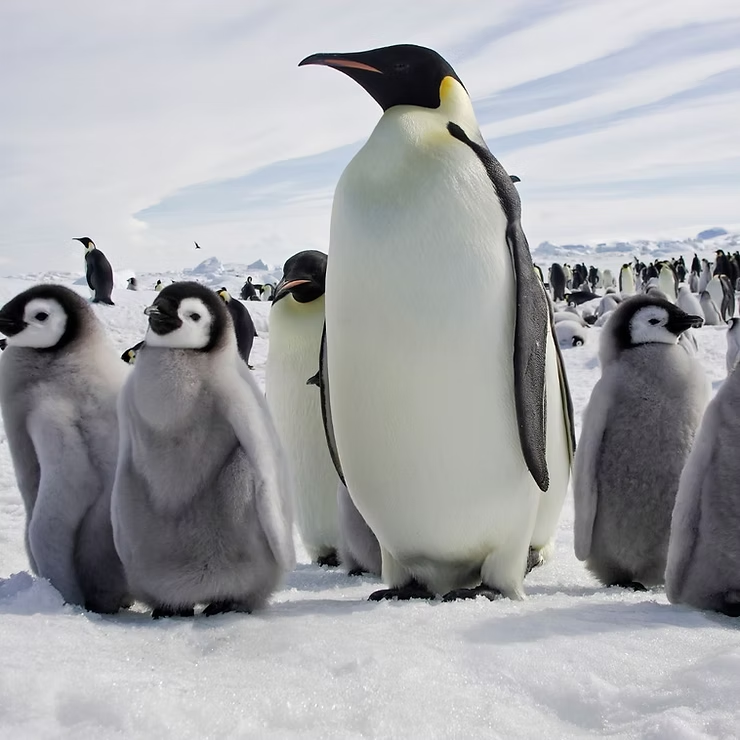Introduction
The Southern Hemisphere is a realm of contrasts, where icy Antarctic waters meet the tropical currents of the Galapagos. Within these extremes thrives a diverse community of wildlife, from penguins darting through the sea to albatrosses gliding endlessly on the wind. This article explores the lives of penguins and their neighbors—whales, seals, and seabirds—while highlighting conservation efforts that protect these fragile ecosystems.
Key Takeaways
- Penguins are expert aquatic acrobats, perfectly adapted for speed and survival in the ocean.
- Albatrosses and seabirds dominate the skies, showcasing extraordinary wind navigation skills.
- Whales and seals play vital roles in Antarctic ecosystems and offer unforgettable encounters.
- Tourists can contribute to conservation through citizen science projects during their journeys.
- Global and local conservation initiatives are essential to preserving Southern Hemisphere biodiversity.
Penguins: Masters of the Sea
Acrobats of the Ocean
Streamlined bodies, dense bones, and powerful flippers allow penguins to dive to remarkable depths and reach speeds of up to 25 kilometers per hour. These adaptations make them agile hunters, capable of catching fish, squid, and krill while evading predators.
- Streamlined body shape reduces resistance in water.
- Feathers provide insulation and buoyancy.
- Muscular strength powers long dives and swift chases.
Adaptations for Survival
On land, penguins may appear clumsy, but beneath the waves they transform into swift and graceful athletes. Their dense bones counteract buoyancy, while layers of blubber and air-trapping feathers protect them from the cold.
Avian Rulers of the Sky
The Majestic Albatross
With wingspans wider than cars, albatrosses can soar for days without flapping. Their technique of dynamic soaring enables them to harness wind gradients and travel vast distances, making them guardians of the southern skies.
Seabirds and Wind Navigation
Seabirds exploit thermals and air currents to migrate across oceans and locate schools of fish. Their ability to ride the wind is both an evolutionary marvel and a survival necessity.
Conservation of Seabirds
Climate change, habitat loss, and unsustainable tourism threaten these avian giants. Supporting eco-friendly tours and citizen science programs helps ensure seabirds continue to thrive.
Marine Mammals of Antarctica
Humpback Whales
Humpbacks are known for their acrobatics—breaching, tail lobbing, and flipper slapping—behaviors that aid communication and strengthen social bonds. They migrate thousands of kilometers between breeding and feeding grounds, enriching Antarctic ecosystems through their feeding habits.
Leopard Seals
These apex predators thrive in Antarctic waters, feeding on krill, fish, and even other seals. Though fierce, they play an essential role in maintaining ecological balance.
Wildlife Encounters
- Use binoculars for distant spotting of seals and whales.
- Stay silent and patient for closer encounters.
- Record sightings to support ongoing research.
Citizen Science and Conservation
Travelers to Antarctica can actively contribute to research and conservation. Initiatives such as photographing whale flukes for the “Happy Whale” project, logging seabird surveys, or assisting NASA with cloud data help scientists track wildlife and monitor environmental change.
Unforgettable Wildlife Experiences
Penguin Colonies
Visiting penguin rookeries offers a glimpse into their bustling communities, where chicks are nurtured and adults return from foraging expeditions.
Whale Watching
Spotting a breaching whale or observing pods of orcas connects visitors deeply with the marine world. Guided tours ensure safe, respectful encounters.
Seal Encounters
From lounging on ice floes to gliding through the water, seals showcase their adaptability. Observing them from a respectful distance ensures minimal disturbance.
Conclusion
From penguins that master the seas to albatrosses soaring overhead, the Southern Hemisphere offers a vibrant stage of life and survival. These creatures remind us of the ocean’s fragility and the responsibility we share in protecting it. Every visitor, whether scientist, traveler, or photographer, has a role in ensuring that these ecosystems endure for generations. The call of the wild in Antarctica and beyond is not only an invitation to witness beauty but also a call to safeguard it.

